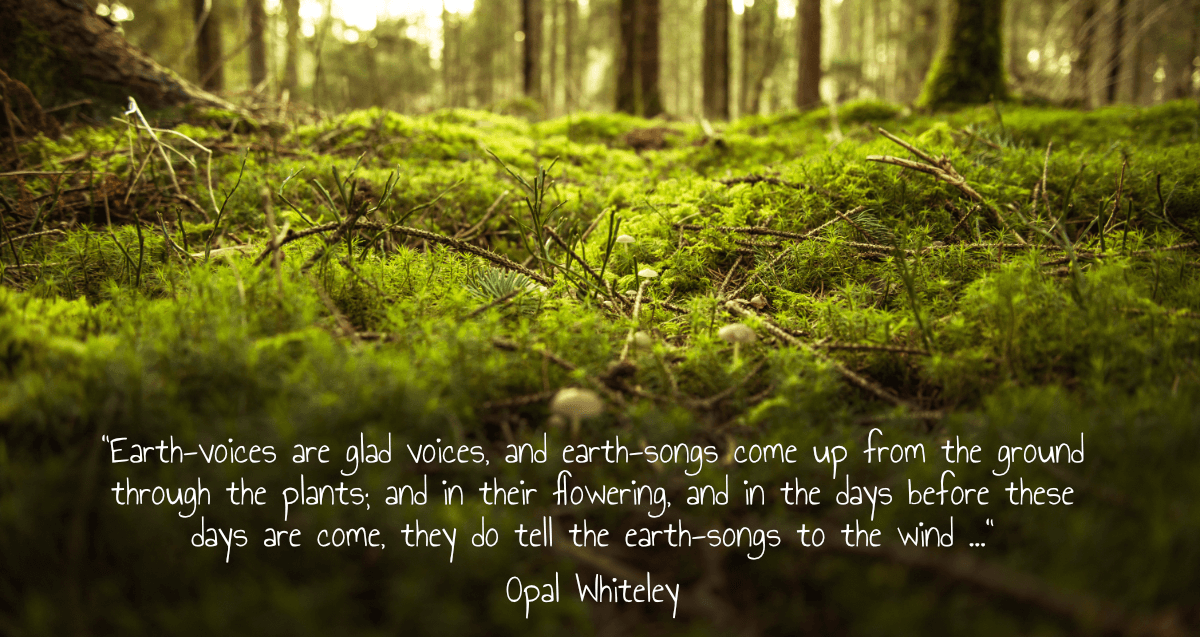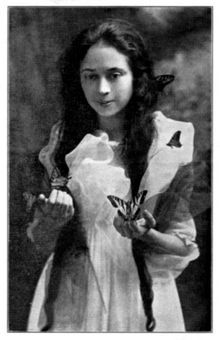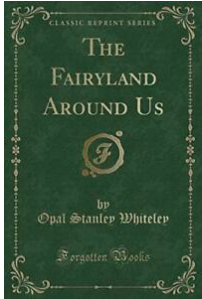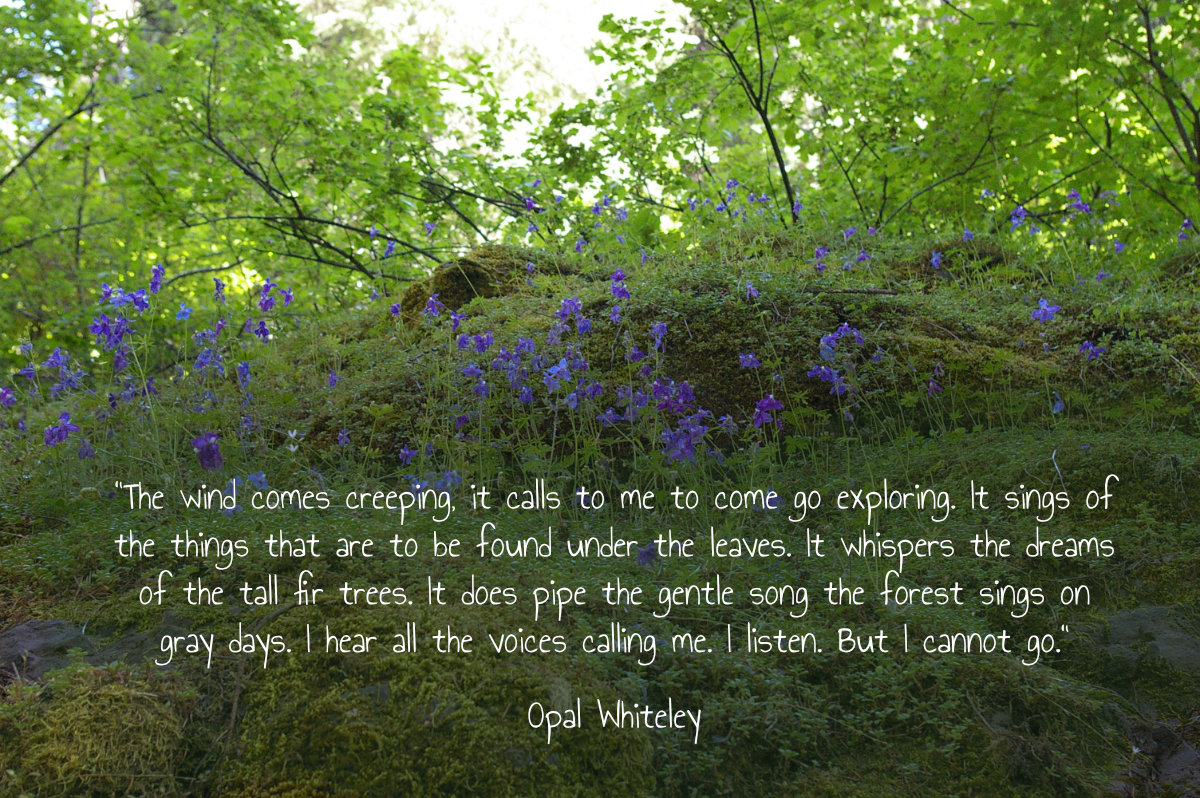
Every town has its legends.
Most are unknown to outsiders. However, our legend, Opal Whiteley, is known worldwide. Many visitors come to Cottage Grove each year to see where she lived and wrote about. People love to take selfies by her mural.
In 1918 Opal was the most popular teenager in Oregon. She was a magnetic teacher and youth leader blending science and faith in lectures to thousands of people. She had a nature collection that numbered into the thousands of items. Everyone thought she would be a great teacher or scientist. Instead, she became perhaps Oregon’s most controversial author and the last literary mystery of the 20th century.
It can be hard to separate fact from fiction in legends. We don’t know for certain what her younger years were like, but she came to Cottage Grove in 1904 when she was six years old. Her family’s farm was near today’s Row River Trail Head on Mosby Creek. She was from a family of loggers and miners. Her writings are filled with both her love of nature and the people who work in the woods. Her uncle, Henry D. Pearson was among the first to discover gold in large quantities at the Annie Mine in the Bohemia Mining District. Opal’s father worked in many lumber camps.
By the time she was in high school, Opal had lived in over a dozen lumber camps up and down the Row River. She could hunt, fish and sew her own clothes. She also had a talent for teaching children. Opal was nine years old when she started taking children on nature walks, describing the beauty of the outdoors and inspiring them to love its Creator. She attended the Church of Christ at 6th and Gibbs. In her early teens, Opal gained fame around the state with the Junior Christian Endeavor youth group, increasing its membership ten fold in just a few years.
Opal also caught the attention of the University of Oregon faculty, who admitted her before she had finished high school! She entered the university with the fanfare usually reserved for a sports star today. However, she took a huge load of classes and set the record for most library books checked out. Opal was like the proverbial kid in the candy store! She had a photographic memory, which some researchers have attributed to autism. But Opal dropped out in her sophomore year, leaving many classes incomplete.
In 1918 Opal Whiteley left the university for Los Angeles to pursue her dreams of writing nature books and building a children’s museum. She even tried to get into acting. Opal was unsuccessful at getting into motion pictures, but she did teach the children of many Hollywood stars and producers. They also helped her publish her first book, The Fairyland Around Us. From Hollywood Opal traveled east to Boston, home of the nation’s most influential publishers.
Opal appeared to strike gold. In 1920 her childhood diary, Opal, the Journal of an Understanding Heart was the number two best-seller. At the young age of twenty-two, Opal Whiteley was a major international success! Her story of being an orphaned child growing up in the Oregon lumber camps took the literary world by storm. Opal’s tales of talking with trees, animals and their fairy spirits captivated audiences.
But with the same speed as she rose… Opal fell from the public’s favor. Just a year later her diary was out of print and Opal was accused of fraud, and lying about her family. She claimed that the Whiteleys were not her real parents and that her actual “Angel Father” was a French prince, Henri d’ Orleans. It was also charged she had written her diary as a young adult, not as a child.
Disgraced, Opal went to India and Europe to prove her story. She never returned to Oregon. But today, she is buried in London’s aristocratic Highgate Cemetery under both her French and her American names. Her story of royal birth is more accepted in Europe than in America. You can view a rubbing of her gravestone in the Library.
For decades Opal Whiteley’s beautiful writings about nature, God and children gathered dust – while she was committed to an English mental hospital. The hospital accepted that she was of aristocratic heritage but considered mentally ill. She died there in 1992 – locked away for almost fifty years, diagnosed with schizophrenia, although it’s more likely she was on the Autism Spectrum. Opal Whiteley’s work and writings were almost forgotten.
Today, Opal has made a literary comeback. Her books have been reprinted in at least four languages, including French and Chinese. There is a nice tourist map of the places where Opal lived and wrote about. Statues of Opal stand at the entrances of both the Cottage Grove Library and the University of Oregon’s Knight Library. Oregon’s college dropout now greets visitors at two libraries. (That must make her some sort of princess.)
Even after 100 years there is controversy – “What Happened to Opal?” Different people see her differently – like the opal gemstone itself. If you like a good mystery or enjoy enchanting descriptions of nature, then explore the story of Opal Whiteley. The Opal Whiteley Memorial is the largest site on the Internet for research, photos and unpublished pieces of her diaries.
Enjoy the Haunting Mystery of “Princess Opal Whiteley”!


The Fairyland Around Us by Opal Whiteley
Want to Know More?
Read Steve McQuiddy’s Popular Article
Steve has done a really good article on Opal. It’s a bit dated, written in 1997. We know a lot more about her today, but this is still an excellent, balanced article of Opal and the controversy of her best-selling diary by a respected Lane County author. It was also published in the Lane County Historian.
